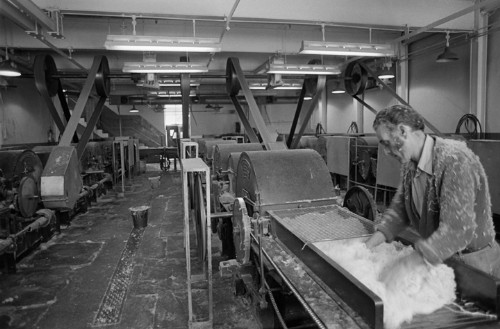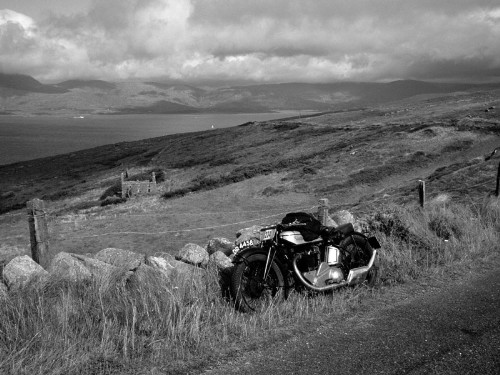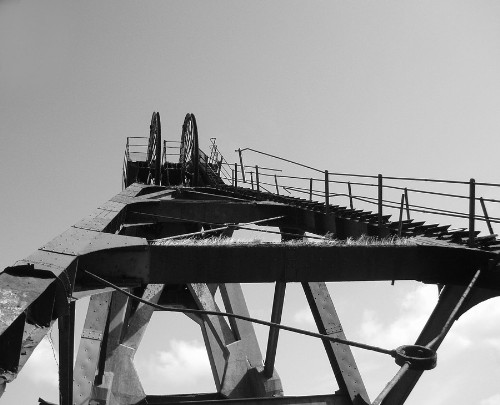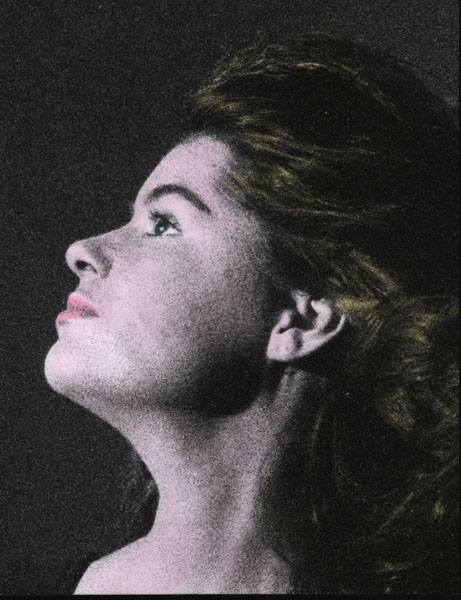| Author |
 Topic Topic  |
|
Rossie
|
 Posted -
11/01/2008
:
19:30 Posted -
11/01/2008
:
19:30
|
Because of the grim weather, I have been unable to experiment outside with my shiny new camera, so I have resorted to indoor efforts, using flash and focus................
Gill
Kalh mera oi filoi mou
|
|
| Replies |
| Author |
|
|
Stanley
Local Historian & Old Fart
    

36804 Posts

|
|
 Posted - 09/02/2008 : 14:49 Posted - 09/02/2008 : 14:49
B&W done on Mrs Nikon is brilliant....... Mind you, I'm having great fun scanning alll my old negs in..... Only about 100,000 to go (or thereabouts....)
Stanley Challenger Graham

Barlick View
stanley at barnoldswick.freeserve.co.uk  |
Tizer
|
 Posted - 09/02/2008 : 15:09 Posted - 09/02/2008 : 15:09
Wow, more great pictures! I wish I could remember where I read the article about photography in B&W because it listed three important things you should have in the picture whe taking B&W. A lot of contrast was one. Malcolm has reminded me of the second - texture. I wonder that the third was - perhaps reflections but then that might be just an example of contrast. The reflections are superb in Kev's picture.
The article showed some example photos and one was a shallow river running over boulders. The texture of those boulders sticking out of the water and the reflected sunlight on the smooth but curving water surfaces gave a terrific picture.
Malcolm...
You said "As far as I know, the First War movie film is colourised, not original". This raises another question. The earliest postcards were in B&W, then there were some with part colour in them, then we got full colour. Do you know how they did the part colour? I've seen street scenes were some of the people's clothes or a shopffront were in colour but the rest in B&W. Or a studio photo of a person with clothing coloured but not the rest. Did they "paint in" colours some way?
Stanley...
Do you scan the negs as for a photo and then invert from neg to pos on the computer afterwards? Have you scanned any colour slides? I tried that with a transparency adapter on slides which had excellent resolution but the resulting JPG pictures were nowhere near as good. Then I tried projecting the same slides and photographing the image on a digital camera. The result was the same - not as good as the slides. I don't know what causes the loss of resolution.
Edited by - Tizer on 09/02/2008 15:18
 |
softsuvner
|
 Posted - 09/02/2008 : 22:24 Posted - 09/02/2008 : 22:24
Tizer
The early colour postcards you see were hand-coloured (basically painted) on a production line using stencils. The French devised machines to do the job, and even extended the system to cine film, colouring every frame individually!
Hand colouring was still used on some expensive studio still pictures up to the 1950's.
There were a number of colour still photography processes from the early years of the century. Drawback was that the emulsions were unstable, expensive and the film was very slow. Amateur colour photography really developed with Kodak Eastmancolour which used three layers of emulsion each sensitive to a different part of the colour spectrum. The Germans developed a slightly different system (through Agfa) which is the system used on all the Nazi colour material that Ian was talking about.
The process for cine natural colour needed 2 different film strips in the same camera, this is the 2 print Technicolour mentioned. Full colour (so called 3 strip Technicolour) only became possible in the 1930's when new optics allowed the one lens to expose 3 strips of film running together. This is the glorious Technicolour that we all remember. All subsequent film colour processes derive from this.
They just started to use three layers of emulsion instead of three strips of film.
Regarding colour slides, I started scanning my slides with an adaptor on a flat bed scanner. The initial results were disappointing until I started to process them through (sorry to mention this again!) Photoshop Elements. Scanning a slide will never get results quite as good as they look when projected. How near you can get is down to the capabilities of the scanner software, and how good you are at setting it up. I've known people resort to slide copiers and reversal film but the results are no better. Loss of sharpness may mean that you haven't set the "Unsharp Mask" control on the scanner software correctly.
Nowadays I use a Nikon Coolscan V dedicated 35mm scanner. But my old Epson flat bed (with post-scan production in Elements) could produce results nearly as good. The main advantage of the Nikon is the excellent dust redcution software so I don't have to spend ages zapping dust spots out in Photoshop.
Malcolm
 |
Stanley
Local Historian & Old Fart
    

36804 Posts

|
|
 Posted - 10/02/2008 : 06:31 Posted - 10/02/2008 : 06:31
My first scanner was a Coolscan (£650!) and I still have it connected up to the old IBM upstairs. Slow speed of the IBM is no problem as the limiting factor is the even slower speed of the Coolscan! I kept it because it does a good job of transparencies. Then I moved on to a £350 Canon scanner that had a light sorce in the lid and could do medium format negs as well as 35mm but not transparencies. When this gave up the ghost I got a Canon LIDE? scanner for about £50. Brilliant 35mm scanning to impossibly high res if you want it and fast. It will do 6 negs at once and I scan on 1600dpi which is good enough for most purposes. I can do about 30 negs an hour at this res, a great improvement on the Coolscan. To give you an idea, when scanning with the CS I used to read a book to while away the time.....
Stanley Challenger Graham

Barlick View
stanley at barnoldswick.freeserve.co.uk  |
Stanley
Local Historian & Old Fart
    

36804 Posts

|
|
 Posted - 10/02/2008 : 06:43 Posted - 10/02/2008 : 06:43

Here's a scan done this week of a Tri-X neg done hand held in low light with available light at Spring Vale, Haslingden in 1979. No manipulation or spotting, straight off the scanner. This the Devil hole..... so called because it frequently caught fire!
Stanley Challenger Graham

Barlick View
stanley at barnoldswick.freeserve.co.uk  |
Doreen
hippies understudy


429 Posts

|
|
 Posted - 10/02/2008 : 10:40 Posted - 10/02/2008 : 10:40
A sunset in My town , Vilafranca del Penedes.

Dordygail 
always the one to make the best of things.  |
Tizer
|
 Posted - 10/02/2008 : 11:03 Posted - 10/02/2008 : 11:03
Doreen,
A lovely photo of where you live - Vilafranca del Penedes must seem like Barlick with extra white paint! 
Malcolm and Stanley, thanks for the exposition on how to scan colour slides. I must have a closer look at my software and do a bit of experimenting. I've never done much image editing other than the basic cropping, re-sizing and a bit of alteration of contrast etc. Thanks also, Malcolm, for explaining about the postcards. Mrs Tizer collects postcards and she too will appreciate reading your comments (yes, she's an avid reader of the Barlick forums but hasn't yet taken the final leap).
And Stanley, what's that bloke doing in the Devil's Hole - the stuff he's handling looks awfully like glass-fibre loft insulation. Should we be digitally manipulating an Elfin Safety man into the shot?
Edited by - Tizer on 10/02/2008 11:05:54
 |
Big Kev
|
 Posted - 10/02/2008 : 17:42 Posted - 10/02/2008 : 17:42
quote:
softsuvner wrote:
Kev
I may feel I am cheating, but it doesn't stop me doing it!
Your picture is an excellent example of what Black and White can do best. Unless you are lucky with the sky, it is more difficult to put emotion into a colour picture (even in Photoshop) with a picture taken against the light, I think the fancy title is something like "contra jour".
Mind you an intentional against the light photo is easier to get right on a manual camera, a point and shoot will often stop too far down to record enough detail.
Stanley
I love it when people take a "here I stand......" Luther type stance on something like colour versus black and white. Great for winding people up. It is all a matter of taste, but you are totally wrong of course!
Ian
I've been fascinated by some of the colour stuff coming out. As far as I know, the First War movie film is colourised, not original. There were valid colour processes for still photos, and some experiments, but the first real practical colour movie process was 2 print Technicolour in the 20's. All the commercial movie systems before then were stencil processes, not "natural".
For anyone who hasn't seen them, there are a series of TV films featuring colour stills from a marvellous French Collection, going back to the start of the 20th century. They have already done up to and including the First War, new series on the 20's in colour starts Monday night on BBC 2.
Here are a couple of my "guilty pleasures": colour photos returned to B & W, One using a colourslide shot and the other a digital. Both were taken on point and shoot cameras.


The second picture was taking using the digital point and shoot as a back up to the heavy metal film camera. When I saw the digital result, I decided that I had to buy a digital SLR!
Malcolm
I love the second "industrial landscape", Malcolm.
Digital and Photoshop was an eye opener for me, I'd always used a wet darkroom and played around with hand tinting. It is so much nicer to be sat in a comfortable chair, in daylight, just "playing" with the images. It's a lot quicker too. The original image below was shot on Kodak Ektar 1000 colour print film (nice and grainy), sent away to a lab for processing, then printed onto llford Gallerie paper and then hand tinted, took me ages. Could probably knock the same thing out in Photoshop in about 30 minutes......

Big Kev
It doesn't matter who you vote for, you always end up with the government.  |
Stanley
Local Historian & Old Fart
    

36804 Posts

|
|
 Posted - 11/02/2008 : 05:32 Posted - 11/02/2008 : 05:32
Tizer, the machines are the second stage in opening cotton waste in the condenser spinning business. It's cotton and stuck to everything. In the end everyone in the trade had a fair chance of getting bysinnosis, very similar to asbestosis.
Stanley Challenger Graham

Barlick View
stanley at barnoldswick.freeserve.co.uk  |
Sue
|
 Posted - 11/02/2008 : 11:23 Posted - 11/02/2008 : 11:23
I have a hand tinted photo of my Dad , aged 2 ( 1919), sitting on a chair with his brother. It was done bya photographer on Manchester Road Burnley. Also the wedding photos of my Aunt and Uncle, 1947, were hand tinted
I think hand tinted photos have a wonderful air about them that is lost on a colour Photo
Sue
If you keep searching you'll find it  |
wendyf
|
 Posted - 11/02/2008 : 12:29 Posted - 11/02/2008 : 12:29
My mother worked at a studio in Brighouse colouring photographs both during and after the war. Her sense of mischief sometimes got the better of her with family photos.
Wendy
 |
softsuvner
|
 Posted - 11/02/2008 : 18:31 Posted - 11/02/2008 : 18:31
Kev
I can well believe the amount of work needed for that image in the pre-digital age. There were many photographers at the end of the 19th Century, influenced by the Impressionist painters, who tried to create new types of "soft" photographs, breaking up the image with grain using different types of paper. They would have had a much easier time with Photoshop!
I have been looking for a hand-coloured photo, I know that I have one of my mother from the 1940's somewhere. All I have found so far is an uninspiring postcard of Bournemeouth posted in 1964, amazing how late hand-retouching lasted. The colours are always soft pastel shades.
The latest digital gizmo is a set of software (DXO filmpack) that can reproduce the look of different types of photographic film. The advert mentions my beloved Kodachrome 64 and Stanley's favourite Kodak Tri X 400. One they don't do is the old Agfa Ct 18 colour slide film that turns back to black and white after 30 years! At 60 quid a throw, I shan't be investing.
Ultimately, all these different techniques should be about creating an image that speaks to the person who took it, and maybe to other people too. As I have said before on OGFB, in the future, most photos will be taken through an inferior small lense in the back of a mobile phone and never be printed up. I personally fear that old photos as we know and love them will not survive.
Malcolm
 |
Stanley
Local Historian & Old Fart
    

36804 Posts

|
|
 Posted - 12/02/2008 : 06:07 Posted - 12/02/2008 : 06:07
Not while I am alive.........
Stanley Challenger Graham

Barlick View
stanley at barnoldswick.freeserve.co.uk  |
Tizer
|
 Posted - 12/02/2008 : 09:52 Posted - 12/02/2008 : 09:52
Well said, Stanley!
Malcolm, I'm not sure whether your comment "I personally fear that old photos as we know and love them will not survive" meant that people will throw away their old photos...or will stop taking photos of the "old" type, i.e. on conventional cameras and standard digital cameras? As for the first case, there are lots of collectors of old photos and postcards and Ebay does a good job of encourgaing people to sell old photos rather than throw them away (Ebay has been good in this sense for preserving lots of other things, like old documents). As for the second, won't people still want high resolution pics as well as the little mobile phone pics?
A question on scanning again. When I look at the scanning guides to learn more about resolution it tells me that for anything to be viewed on a PC screen there is no point in scanning at more than 72dpi because that is the resolution of the screen. I view my photos on screen. If I scan slides to make them into digital photos surely it has to be at more than 72dpi?
 |
Rossie
|
 Posted - 12/02/2008 : 11:05 Posted - 12/02/2008 : 11:05
I believe there is a hand-tinted photo of myself aged 2 years lurking in the bottom of a drawer somewhere around here. Also I have two oval framed small hand-tinted portraits of our children taken and tinted in the early 1970s by a Padiham photographer. These are not hidden away in a drawer are hanging on the wall for all to see.
Malcolm - as our family's amateur historian, I have a horror of digital photos disappearing due to a computer crash or simply because they never get any farther than the mobile phone. All that valuable and irreplacable information lost!! Consequently I try to back up frequently and always print off a selection of the best ones and put them in albums. It is so much easier and nicer to sit down with an album of photos together and talk about them, rather then sitting around a PC or TV watching them. In this I am following in the footsteps of my father, who was an avid photographer for all of his adult life. He took colour transparencies and very few were ever thrown away. Consequently when he died I inhertited them all. They take up a great deal of space in my office, where there are at least 4,000 in wooden boxes, and even more occupy a cupboard upstairs.
I also have a very precious bit of video footage taken just before my dad died, when he was in failing health and was loosing his memory. His brother, my uncle, had been a keen cine photographer and one evening he brought his old projector and some reels of old film to show my dad. As this old stuff was projected onto the screen in the lounge my husband video'd it and it came out suprisingly well, and with the addition of an unrehearsed 'commentary' from my uncle and my mum as they tried to jog my dad's disappearing memory. As, in addition to family stuff, like my Christening, it includes war-time footage, it makes a valuable archive.
Gill
Kalh mera oi filoi mou
 |